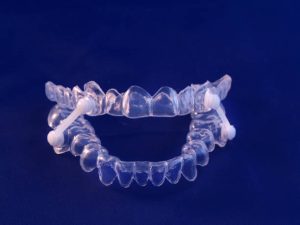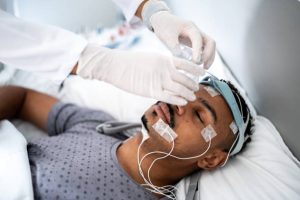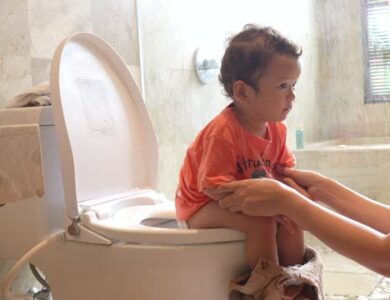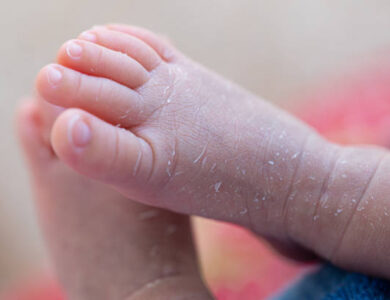Sleep Apnea Treatment Without CPAP: 4 Great Alternative Solutions

Sleep apnea is a serious sleep disorder that affects millions of people worldwide. It is characterized by repeated episodes of breathing interruptions while sleeping, which can lead to a range of health issues including heart disease, stroke, and even death.
The most common treatment for sleep apnea is Continuous Positive Airway Pressure (CPAP) therapy, which involves wearing a mask over the nose and/or mouth to keep the airway open during sleep. However, many people find CPAP therapy uncomfortable or inconvenient and struggle to stick to the treatment. Fortunately, there are alternative solutions for sleep apnea treatment that don’t involve CPAP.
In this blog post, we will explore 4 alternative sleep apnea treatment Without CPAP that will improve your quality of life. These treatments are effective, non-invasive, and may be more suitable for those who cannot use a CPAP machine or are looking for a more comfortable solution.
Table of Contents
What are the alternative solutions to Sleep Apnea Treatment Without CPAP?
- Changes to lifestyle and body need
- Positional Therapy
- Oral Appliances
- Surgery
1. Lifestyle Changes

Sleep apnea is a common sleep disorder that can be effectively treated with the use of Continuous Positive Airway Pressure (CPAP) machines. However, not everyone can tolerate CPAP therapy or may prefer to explore alternative solutions.
Lifestyle changes, such as weight loss, exercise, and dietary modifications, are effective sleep apnea treatment without CPAP. This section deals with the role of weight loss, the benefits of regular exercise and physical activity, and dietary changes that can alleviate sleep apnea symptoms.
May be interested: 11 High Protein Meal Prep Snacks to Keep You Full and Focused.
The Role of Weight Loss in Reducing Sleep Apnea Symptoms
Weight loss can significantly reduce sleep apnea symptoms in overweight and obese individuals. This is because excess weight can contribute to the narrowing of the airway, which leads to breathing difficulties during sleep. Losing weight can open up the airways, this improves breathing and reduces snoring.
The Benefits of Regular Exercise and Physical Activity
Regular exercise and physical activity can also improve sleep apnea symptoms. Exercise can help to strengthen the muscles in the throat, which can help to keep the airway open during sleep. It can also lead to weight loss, which, as discussed above, can alleviate sleep apnea symptoms.
Regular exercise can improve overall health and reduce the risk of other health conditions that may contribute to sleep apnea.
Dietary Changes That Can Alleviate Sleep Apnea Symptoms
Certain dietary changes can also be effective in reducing sleep apnea symptoms. For example, avoiding alcohol and sedatives can help to reduce the relaxation of the muscles in the throat, which contributes to breathing difficulties during sleep.
Avoiding large meals and eating a healthy, balanced diet can help to promote weight loss and reduce inflammation in the body, which may contribute to sleep apnea.
Lifestyle changes such as weight loss, exercise, and dietary modifications can be effective in reducing sleep apnea symptoms without the need for a CPAP machine. Making these lifestyle changes will improve the symptoms and overall health of individuals with sleep apnea.
Read Also Drinking Coffee After Drinking Alcohol. Dangers & Side Effects
2. Positional Therapy for sleep apnea treatment without CPAP

Positional therapy is an alternative treatment for sleep apnea that focuses on changing the sleeping position to alleviate symptoms.
This method is effective for individuals who have mild to moderate sleep apnea or snoring that is worse when sleeping on their back.
Let us look at what positional therapy is and its benefits, different methods of positional therapy and limitations and considerations for those with severe sleep apnea.
Positional Therapy and Its Benefits
Positional therapy involves changing the sleeping position to reduce the severity of sleep apnea symptoms.
The goal is to encourage individuals to sleep on their side, which can reduce the collapse of the upper airway and improve breathing during sleep. This can result in a reduction in snoring and fewer instances of interrupted breathing during sleep.
In addition to improving sleep quality, positional therapy can also reduce the risk of developing other health conditions associated with sleep apnea.
Different Methods of Positional Therapy
Several methods of positional therapy can be used to encourage sleeping on one’s side.
One popular method is to use a wedge pillow that elevates the head and shoulders, making it more difficult to roll onto one’s back during sleep.
Another method is to use a specialized sleep shirt that has a pocket on the back to hold a tennis ball or other small object, making it uncomfortable to sleep on one’s back.
Other methods include using a body pillow to encourage side sleeping or using a mattress that can be adjusted to elevate the head and upper body.
Limitations and Considerations for Those with Severe Sleep Apnea
While positional therapy can be effective for those with mild to moderate sleep apnea, it may not be suitable for individuals with severe sleep apnea. Severe cases may require more intensive treatment, such as CPAP therapy.
Additionally, it is important to note that positional therapy may not work for everyone and may take time to see results. It is also important to consult with a healthcare provider before starting any new treatment for sleep apnea.
positional therapy is an effective alternative treatment for sleep apnea used to reduce the severity of symptoms. It can be used alongside other treatments or as a standalone solution.
3. Oral Appliances for sleep apnea treatment without CPAP

Oral appliances are a non-invasive alternative treatment for sleep apnea that can be effective for individuals who cannot tolerate Continuous Positive Airway Pressure (CPAP) therapy or prefer a different treatment option. In this blog post, we will provide an overview of oral appliances for sleep apnea treatment, the different types of oral appliances available, how they work, and the benefits and drawbacks of using oral appliances for sleep apnea.
Oral appliances are small, custom-fitted devices that are worn in the mouth during sleep. They work by repositioning the jaw and tongue to keep the airway open, which can prevent breathing difficulties and snoring. Oral appliances are good treatment option for individuals with mild to moderate sleep apnea or snoring that is worse when sleeping on their back.
Types of Oral Appliances for sleep apnea treatment without CPAP and How They Work
There are two main types of oral appliances used for sleep apnea treatment: Mandibular Advancement Devices (MADs) and Tongue Retaining Devices (TRDs).
- Mandibular Advancement Devices (MADs)
MADs are the most commonly used oral appliance sleep apnea treatment Without CPAP. They work by holding the lower jaw in a slightly forward position during sleep. By doing this, they help to keep the airway open and prevent the tongue and other tissues from collapsing and blocking the airway.
MADs are custom-fitted to each individual’s mouth and consist of two trays that fit over the upper and lower teeth. The trays are connected by a hinge that allows the lower jaw to be gradually moved forward. This helps to create more space in the airway, which reduces the risk of snoring and apnea.
- Tongue Retaining Devices (TRDs)
TRDs are less commonly used than MADs, but they can be effective for some people with sleep apnea. TRDs work by holding the tongue in a forward position, which helps to keep the airway open. The device consists of a mouthpiece that fits over the teeth and a small suction cup that attaches to the tongue.
The suction cup holds the tongue in a forward position during sleep, which prevents it from falling back and blocking the airway. TRDs are typically recommended for people with a small lower jaw or a large tongue.
Which Type of Oral Appliance Is Right for You?
The type of oral appliance that is right for you will depend on your individual needs and preferences. MADs are typically recommended for most people with sleep apnea, as they are the most commonly used and effective for many people.
TRDs may be a good option for people who have a small lower jaw or a large tongue. However, they can be uncomfortable for some people and may take some time to get used to.
The Benefits and Drawbacks of Using Oral Appliances for Sleep Apnea
One of the main benefits of using oral appliances for sleep apnea treatment Without CPAP is that they are non-invasive and easy to use.
They are also small and portable, making them convenient for travel. Additionally, oral appliances can be an effective treatment option for individuals who cannot tolerate CPAP therapy.
However, there are also drawbacks to using oral appliances. They may not be as effective as CPAP therapy for severe sleep apnea, and they may cause discomfort or pain in the jaw, teeth, or gums. Additionally, oral appliances may require regular adjustments or replacement, which can be costly.
Oral appliances are good for individuals with mild to moderate sleep apnea or snoring, but may not be as effective as CPAP therapy for severe cases. It is important to consult with a healthcare provider to determine if oral appliances are a suitable treatment option and to ensure proper fitting and usage.
4. Surgical sleep apnea treatment without CPAP

Surgery is a sleep apnea treatment Without CPAP option for people who have not had success with other treatments or who have severe cases of the condition. We discuss in this section the types of surgery for sleep apnea treatment without CPAP.
- Uvulopalatopharyngoplasty (UPPP)
- Maxillomandibular Advancement (MMA)
Let us see the limitations and benefits of each of these two types of surgeries for apnea treatment
- Uvulopalatopharyngoplasty (UPPP)
UPPP is the most common surgical sleep apnea treatment Without CPAP. It involves removing the excess tissue from the throat, including the uvula, tonsils, and part of the soft palate. This helps to increase the size of the airway and reduce the risk of blockages.
UPPP is typically performed under general anaesthesia and requires an overnight stay in the hospital. Recovery time can vary, but most people can return to work and normal activities within a few weeks.
- Maxillomandibular Advancement (MMA)
MMA is a more extensive surgical sleep apnea treatment Without CPAP that involves moving the upper and/or lower jaw forward. This helps to create more space in the airway and reduces the risk of blockages. MMA is typically recommended for people with severe cases of sleep apnea or those who have not had success with other treatments.
MMA is a complex procedure that requires an overnight stay in the hospital and several weeks of recovery time. It can also be quite expensive and is not always covered by insurance.
Consider these when Opting for Surgical sleep apnea treatment without CPAP
While surgery can be effective for some people with sleep apnea, it is important to carefully consider the potential benefits and limitations before deciding to undergo a procedure. Surgery can be expensive, and recovery can be lengthy and uncomfortable.
Additionally, not all people with sleep apnea are good candidates for surgery. Factors such as age, weight, and overall health can affect the success of a surgical procedure.
Work with a healthcare provider who specializes in sleep medicine to determine if surgery is the right option for you. They can help you weigh the potential benefits and risks of surgery and recommend the best course of treatment for your individual needs.
Conclusion
Sleep apnea is a common sleep disorder that can have a significant impact on a person’s health and quality of life.
While CPAP is often considered the gold standard for sleep apnea treatment, it is not the only option available. In this blog post, we have discussed four alternative solutions for sleep apnea treatment without CPAP: lifestyle changes, positional therapy, oral appliances, and surgery.
Lifestyle changes, such as weight loss, regular exercise, and dietary modifications, can be effective in reducing sleep apnea symptoms. Positional therapy, which involves sleeping in a specific position to prevent airway blockages, can also be helpful. Oral appliances, such as mouthguards or mandibular advancement devices, can help to keep the airway open during sleep. Finally, for those with severe sleep apnea, surgery may be an option to consider.
Every individual’s experience with sleep apnea is unique, and what works for one person may not work for another. It is recommended to consult with a healthcare provider who specializes in sleep medicine to determine the best course of treatment for your individual needs.




One Comment